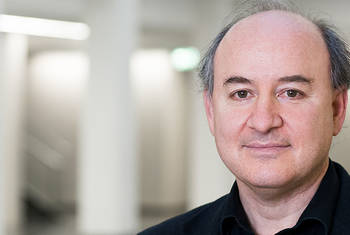Alessio Attardo What Happens In A Person's Brain When A Memorable Experience Occurs?
Holding faculty positions at a number of prestigious universities in Germany and the USA, Dr. Alessio Attardo is Group Leader in the Department of Stress Neurobiology and Neurogenetics at the Max Planck Institute of Psychiatry. Having completed his doctoral work at the Max Planck Institute of Molecular Cell Biology and Genetics, Attardo spent several years at Stanford University, first as a postdoctoral fellow and later as a HHMI research specialist. Attardo’s research focuses on hippocampal plasticity as well as representation and memory during stress. With his current research being supported by a number of long term grants from the DFG, since 2019, Attardo has been invited to present his research to specialist institutes in Greece, Italy, Germany and Israel.
Area of Research
Neurobiology, Neurogenetics, Neuroscience
since 2015
2008-2015
Postdoctoral Fellow
Stanford University
2007
Postdoctoral Fellow
Max Planck Society (more details)
Max Planck Institute of Molecular Cell Biology and Genetics
2002-2007
1996-2001
Degree in Biological Sciences
University of Palermo
 © Maximilian Dörrbecker
© Maximilian Dörrbecker
Max Planck Society
"The Max Planck Society is Germany's most successful research organization. Since its establishment in 1948, no fewer than 18 Nobel laureates have emerged from the ranks of its scientists, putting it on a par with the best and most prestigious research institutions worldwide. The more than 15,000 publications each year in internationally renowned scientific journals are proof of the outstanding research work conducted at Max Planck Institutes – and many of those articles are among the most-cited publications in the relevant field." (Source)
Institute
Max Planck Institute of Psychiatry
"The Max Planck Institute of Psychiatry, which focuses primarily on research into depression and anxiety disorders, is one of the world's leading institutes in this field. Here, basic research is closely interlinked with clinical research: the Institute incorporates a 120-bed hospital, numerous specialist outpatient departments and a day unit. Within these facilities, the modern research branches of genetics and proteomics are combined with the clinical analysis techniques of imaging and the measurement of brain function. The aim is to identify biomarkers of psychiatric and neurological disorders in a bid to better understand the molecular basis of these diseases. The knowledge obtained goes into the development of new therapies and drugs for the personalised medicine of tomorrow." (Source)
Map
When memorable experiences occur, a particular subset of neurons is activated in the brain. In this video, ALESSIO ATTARDO analyzes how these engram neurons are created. Imaging the synapse network through which neurons connect and communicate, Attardo is able to identify distinctions between those that go on to become engram neurons and those which do not. Focusing on the hippocampus, this work calls into question existing research on the neocortex by suggesting that animals with less stable connectivity tend to be better at learn and recall. Helping us to better understand the neurological processes involved in memory formation, the research has clear applications for the treatment of people who suffer deficiencies in this area.
LT Video Publication DOI: https://doi.org/10.21036/LTPUB10918
Hippocampal Neurons with Stable Excitatory Connectivity Become Part of Neuronal Representations
- Tim P. Castello-Waldow, Ghabiba Weston, Alessandro F. Ulivi, Alireza Chenani, Yonatan Loewenstein, Alon Chen and Alessio Attardo
- PLoS biology
- Published in 2020









